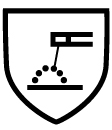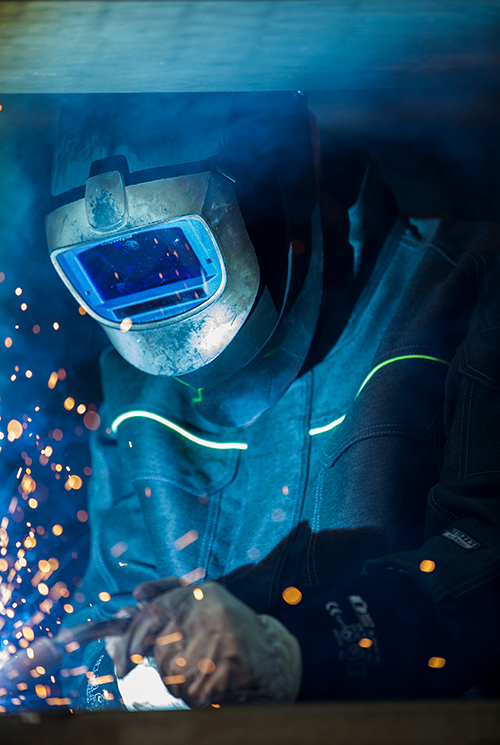
WELD

EN ISO 11611
Protective clothing for use in welding and allied processes
This standard specifies PPE Clothing used in welding work or allied processes where you have the risk of spatter (small splashes of molten metal), short contact with flame, radiant heat from the arc, and risk of electric shock by short-term, accidental contact with live electrical conductors (at voltages up to approximately 100 V DC in normal conditions of welding).
The standard is divided in two different classes with different levels of protection. The welding function of the fabric is tested with 15 drops (class 1) or 25 drops (class 2) of molten metal. The design of the garment is also a parameter in the CE marking of welding garments. The UV and heat radiation from welding will also challenge the PPE and to prevent impact, that is why fabrics with class 2 fabrics usually have a heavier weight.
| Class | Description | Number of tested drops | Radiant heat, RHTI24(Reaction time, seconds) | Electrical resistance Ω |
| 1 | Protection against less hazardous welding techniques and situations, causing lower levels of spatter and radiant heat. | 15 | ≥ 7 | > 105 |
| 2 | Protection against more hazardous welding techniques and situations, causing higher levels of spatter and radiant heat. | 25 | ≥ 16 | > 105 |
Most Tranemo FR fabrics pass the requirements of the standard - at least to Class 1. In the workplace however, grinding and cutting are the toughest challenges since these processes always produce spatter at levels higher than the 25 drops that are used as the test in Class 2. Tranemo performs in-house fabric tests with both welding and grinding/cutting combined but we always advise wearer tests to determine the correct solution for that specific enviornment. Tranemo also has different recommendations for different welding working areas.

